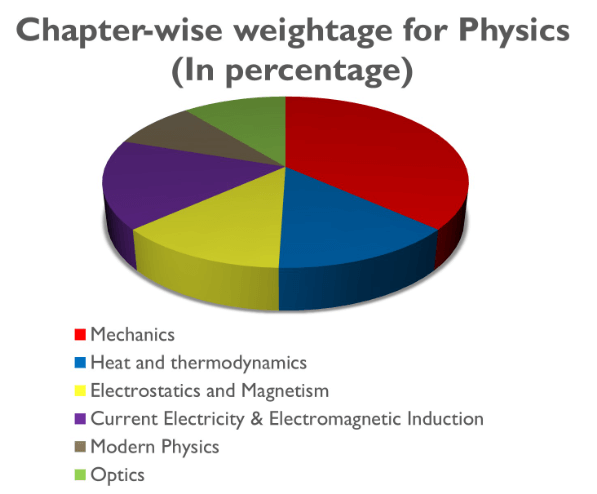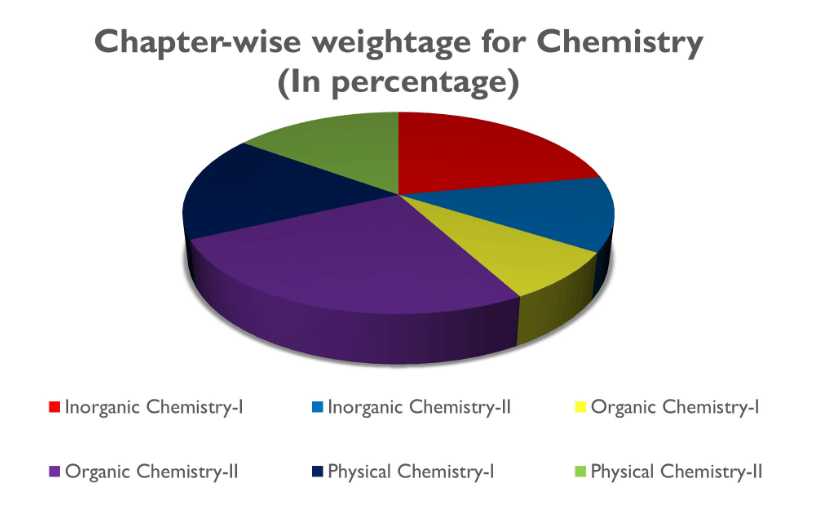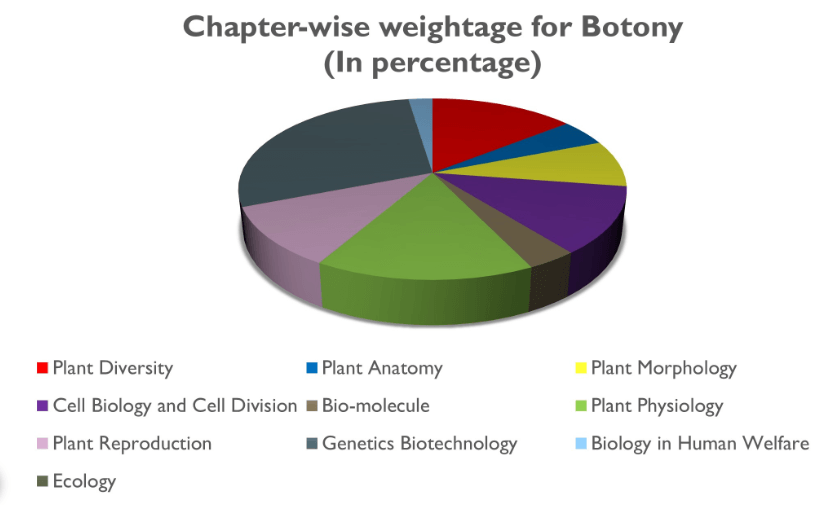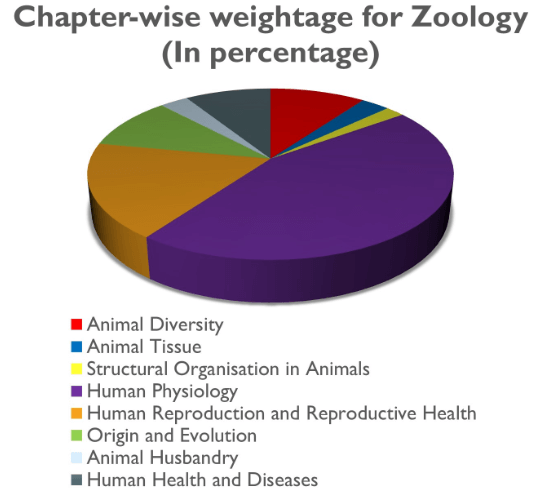Table of Contents
The National Eligibility cum Entrance Test (NEET) is the most important Undergraduate Medical Entrance Exam that is conducted by NTA. To succeed in NEET 2025, it’s important for all the Medical aspirants who are awaiting to stay focused, motivated, and have a solid study plan. One great way to prepare is by using the NEET Chapter Wise Weightage PDF, which helps students understand how much time to spend on each topic based on its importance. This PDF breaks down the syllabus into three main subjects: Physics, Chemistry, and Biology, guiding students on what to prioritize. By using this tool, aspirants can study smartly and stay on track to achieve their goals.
NEET Chapter Wise Weightage 2025
If you’re preparing for NEET 2025, it’s crucial to get familiar with the important topics and chapter-wise weightage for each subject. Our expert team has carefully analyzed the NEET syllabus and created a chapter-wise weightage guide, as outlined by NTA. NEET is a pen-and-paper exam with multiple-choice questions (MCQs) from Physics, Chemistry, and Biology (Botany and Zoology). There are 200 questions in total, 50 from each subject. For every correct answer, you’ll earn 4 marks, while each wrong answer will cost you 1 mark. Knowing the key topics and their weightage can help you focus your preparation and boost your chances of success.
NEET Physics Chapter Wise Weightage
The NEET exam includes 50 questions from the Physics section. Here, we provide the chapter-wise weightage for the NEET Physics Syllabus for Classes 11 and 12. This analysis helps understand which topics are more important by reviewing previous years’ question patterns. It is useful for students to focus on key chapters and units covered in the NTA NEET Syllabus. Knowing this weightage can guide preparation and improve the chances of scoring well. Prioritizing high-weightage topics can save time and boost confidence while preparing for the Physics portion of the NEET exam.

| NEET Physics Chapter-wise Weightage | ||
| Name of the chapter | The number of questions asked (Approx.) | Weightage in percentile |
| Current electricity | 2 | 8 |
| Dual Nature of Radiation and Matter | 2 | 6 |
| Electromagnetic induction | 1 | 4 |
| Alternating current | 1 | 4 |
| Atoms | 0-1 | 1.5 |
| Electromagnetic waves | 1 | 5 |
| Electric Charges and Fields | 1 | 4.5 |
| Electrostatic Potential and Capacitance | 1 | 4.5 |
| Gravitation | 0-1 | 2 |
| Kinetic theory | 1 | 3 |
| Mechanical Properties of Fluids | 0-1 | 2 |
| Work, Energy, and Power | 1 | 4 |
| Mechanical Properties of Solids | 0-1 | 2 |
| Newton’s Laws of Motion | 1 | 3 |
| Magnetism and Matter | 1 | 2.5 |
| Motion in a Plane | 0-1 | 1.5 |
| Motion in a Straight Line | 0-1 | 1.5 |
| Moving Charges and Magnetism | 1 | 2.5 |
| Nuclei | 0-1 | 1.5 |
| Oscillations | 0-1 | 1.5 |
| Physical World, Units, and Measurements | 0-1 | 2 |
| Ray optics and optical instruments | 1 | 5 |
| Thermal Properties of Matter | 0-1 | 2 |
| Thermodynamics | 2 | 9 |
| Semiconductor Electronics: Materials, Devices, and Simple Circuits | 2 | 6 |
| System of Particles and Rotational Motion | 1 | 5 |
| Wave optics | 1 | 5 |
| Waves | 0-1 | 1.5 |
| Total | 45 | 100 |
NEET Chemistry Chapter-wise Weightage
The NEET Chemistry Syllabus is divided into two parts: Section A with 35 questions and Section B with 15 questions. These questions cover topics from Class 11 and 12 Chemistry, including Organic, Inorganic, and Physical Chemistry. Each chapter has a specific weightage based on the NTA’s guidelines. Understanding the chapter-wise weightage can help students focus on important topics and plan their preparation effectively. By covering all the essential topics, students can score well in this section of the exam. A clear study strategy for Chemistry can boost your overall NEET score and improve your chances of success.

| NEET Chemistry Chapter wise Weightage | ||
| Name of the chapter | Number of Questions asked (Approx.) | Weightage in percentile |
| Aldehydes, Ketones and Carboxylic Acids | 2 | 4 |
| Bio-Molecules | 1 | 3 |
| Alcohols, Phenols, and Ethers | 2 | 4 |
| Chemical Kinetics | 1 | 3 |
| Chemical bonding | 2 | 5 |
| d-and f-block elements | 2 | 4 |
| Chemistry in everyday life | 1 | 2 |
| Coordination Chemistry | 4 | 9 |
| Haloalkanes and Haloarenes; Amines | 1 | 3 |
| Environmental Chemistry | 1 | 2 |
| Equilibrium | 3 | 6 |
| Electrochemistry | 1 | 2 |
| General Principles and Process of Isolation Elements | 1 | 2 |
| Hydrocarbons | 1 | 3 |
| Hydrogen | 1 | 3 |
| N containing Organic Compounds | 1 | 3 |
| Organic chemistry some basic principles and techniques – 1 | 1 | 2 |
| Organic chemistry some basic principles and techniques – 2 | 1 | 2 |
| p-block elements(13 14) | 2 | 3.5 |
| p-block elements(15 16 17 18) | 2 | 3.5 |
| Periodic table | 1 | 2 |
| Polymers | 1 | 3 |
| Redox reactions | 1 | 3 |
| s-block elements | 1 | 2 |
| Solutions | 2 | 5 |
| States of Matter | 1 | 2 |
| Structure of Atom | 1 | 2 |
| Surface Chemistry | 1 | 2 |
| The Solid State | 1 | 2 |
| Thermodynamics | 4 | 8 |
| Total | 45 | 100 |
NEET Biology Chapter-wise Weightage
The table below shows the number of questions asked from different topics from the NEET Biology Syllabus and their importance in the exam. It tells how many questions came from each topic and what percentage of total marks they carried. This helps students see which topics were more important. By checking the table, students can focus on key topics while studying. It gives a clear idea of how questions and marks were divided in Biology. This makes it easier to prepare for the exam by understanding which topics need more attention.


| NEET Biology Chapter wise Weightage | ||
| Name of the chapter | The number of questions asked (Approx.) | Weightage in percentile |
| Anatomy of Flowering Plants | 0-1 | 2 |
| Biological Classification | 0-1 | 2 |
| Biomolecules | 1 | 4 |
| Animal Kingdom | 2 | 7 |
| Biodiversity and Conservation | 1 | 3 |
| Body Fluids and Circulation | 0-1 | 1 |
| Biotechnology and its Applications | 1 | 3 |
| Biotechnology: Principles and Processes | 1 | 3 |
| Breathing and Exchange of Gases | 0-1 | 2 |
| Cell: The Unit of Life, Biomolecules | 0-1 | 2 |
| Chemical Coordination and Integration | 1 | 4 |
| Cell Cycle and Cell Division | 0-1 | 2 |
| Digestion and Absorption | 1 | 3 |
| Ecosystem | 0-1 | 2 |
| Evolution | 0-1 | 2 |
| Excretory Products and their Elimination | 0-1 | 2 |
| Environmental Issues | 0-1 | 2 |
| Human Health and Disease | 1 | 3 |
| Human Reproduction | 1 | 3 |
| Locomotion and Movement | 0-1 | 2 |
| Microbes in Human Welfare | 0-1 | 2 |
| Neural Control and Coordination | 0-1 | 2 |
| Mineral Nutrition | 0-1 | 1 |
| Molecular Basis of Inheritance | 2 | 6 |
| Morphology of Flowering Plants | 1 | 5 |
| Organisms and Populations | 0-1 | 2 |
| Photosynthesis in Higher Plants | 0-1 | 2 |
| Plant Growth and Development | 0-1 | 1 |
| Plant Kingdom | 1 | 4 |
| Principles and Inheritance and Variation | 1 | 5 |
| Reproduction in Organisms | 0-1 | 1 |
| Reproductive Health | 0-1 | 2 |
| Respiration in Plants | 0-1 | 1 |
| Strategies for Enhancement in Food Production | 0-1 | 2 |
| Structural Organisation in Animals | 0-1 | 2 |
| Sexual Reproduction in Flowering Plants | 1 | 5 |
| The Living World | 0-1 | 2 |
| Transport in Plants | 0-1 | 1 |
| Total | 90 | 100 |
Medical aspirants can devise their NEET 2025 preparation strategy as they are now aware of high-weightage topics and the topics that can be skipped or given lesser importance. They can also plan a timetable to devote their time effectively for each topic based on the tabularized weightage. We wish good luck to all aspirants who are in the preparation phase to crack their NEET 2025 successfully.





 NEET 2025 City Intimation Slip Out @neet...
NEET 2025 City Intimation Slip Out @neet...
 All India Scholarship cum Entrance Test ...
All India Scholarship cum Entrance Test ...
 NEET 2025 MBBS Cut Off for Government Co...
NEET 2025 MBBS Cut Off for Government Co...


